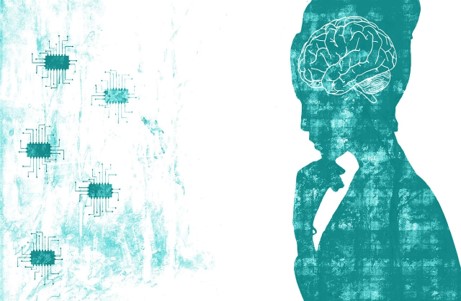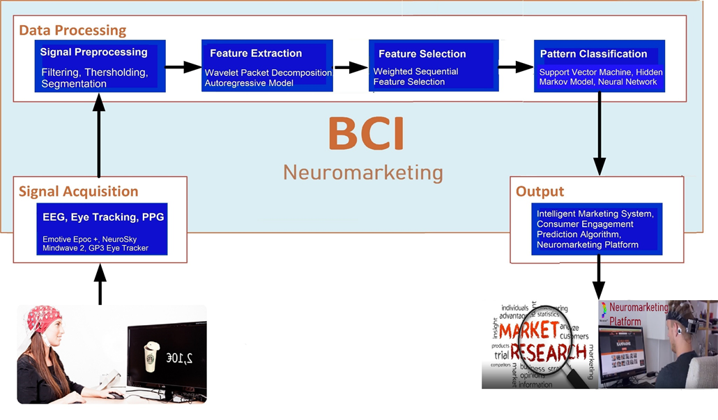Mindwave Analytics
An intelligent neuromarketing solution for Bangladesh


Delivering adequate healthcare in rural and remote areas of developing countries is a major challenge. CMED (Cloud-based MEDical system) addresses this by integrating cloud services with healthcare centers and portable services managed by Community Health Workers (CHWs). CMED categorizes patients into healthy, alarming, and emergency groups, ensuring timely and appropriate care. For complex cases, the system connects CHWs with specialist doctors. Using Identity-Based Encryption, CMED ensures the privacy and confidentiality of patient health information, providing a smart and secure solution to enhance healthcare accessibility for underprivileged populations.
Video
Specifications
- Utilizes Brain-Computer Interface (BCI) technology to record brain signals.
- Analyzes and predicts consumer responses to marketing stimuli.
- Adapts advanced Industry 4.0 technologies for accurate consumer insights.
- Builds the first local Neuromarketing platform in Bangladesh.
- Provides cost-efficient and customized solutions for local businesses.
- Positions Bangladesh on the global stage with innovative marketing research tools.
Diagrams

Publications
Mashrur, Fazla Rabbi & Mahmudur Rahman, Khandoker & Miya, Mohammad & Vaidyanathan, Ravi & Anwar, Syed & Sarker, Farhana & Mamun, Khondaker. (2023). An EEG-based Intelligent Neuromarketing System for Predicting Consumers’ Choice. 10.1007/978-981-19-8032-9_3.
Abstract:
Marketers use different marketing strategies to elicit the desired response from the target customers. To measure customer engagement, they usually conduct one-on-one interviews, surveys, broad polls, and focus group discussions. However, these are costly and sometimes unreliable. On the other hand, neuromarketing measures customer response to marketing stimuli by measuring the electrical activity of the brain and has the potential to address these drawbacks. which can be overcome by neuromarketing. In this work, we proposed a prediction algorithm that can identify consumer affective attitude (AA) and purchase intention (PI) from EEG signals from the brain. At first, the raw EEG signals are initially preprocessed to remove noise. After that, three features are extracted: time, frequency, and time frequency domain features. Wavelet packet transform is used to separate the EEG bands in time-domain feature extraction. Then, for feature selection, wrapper-based SVM-RFE is utilized. Finally, we use SVM to distinguish the classes in AA and PI. Results show that for SVM with radial basis function the kernel performs better to classify positive and negative AA with an accuracy of \(90\pm 4.33\) and PI with an accuracy of \(75\pm 2.5\). So, EEG-based neuromarketing solutions can assist companies and organizations in accurately predicting future consumer preferences. As a result, neuromarketing based-solutions have the potential to increase sales by overcoming the constraints of traditional marketing Keywords Consumer neuroscience Neuromarketing Electroencephalography Consumer behavior Pattern recognition
F. Ishtiaque et al., "BCI-based Consumers’ Preference Prediction using Single Channel Commercial EEG Device," 2022 25th International Conference on Computer and Information Technology (ICCIT), Cox's Bazar, Bangladesh, 2022, pp. 43-48, doi: 10.1109/ICCIT57492.2022.10054806. Published in: 2022 25th International Conference on Computer and Information Technology (ICCIT) Date of Conference: 17-19 December 2022 Date Added to IEEE Xplore: 03 March 2023 DOI: 10.1109/ICCIT57492.2022.10054806 Publisher: IEEE Conference Location: Cox's Bazar, Bangladesh
Abstract:
Brain-Computer Interface (BCI) technology is used in neuromarketing to learn how consumers respond to marketing stimuli. This helps evaluate the marketing stimuli which is traditionally done using marketing research procedures. BCI-based neuromarketing promises to replace these traditional marketing research procedures which are time-consuming and costly. Although BCI-based neuromarketing has its difficulty as EEG devices are inconvenient for consumer-grade applications. This study is performed to predict consumers’ affective attitude (AA) and purchase intention (PI) toward a product using EEG signals. EEG signals are collected using a single channel consumer-grade EEG device from 4 healthy participants while they are subject to 3 different types of marketing stimuli; product, promotion, and endorsement. Multi-domain features are extracted from the EEG signals after pre-processing. 52 features are selected among those using SVM-based Recursive Feature Elimination. SMOTE algorithm is used to balance out the dataset. Support Vector Machine (SVM) is used to classify positive and negative affective attitude and purchase intention. The model manages to achieve an accuracy of 88.2% for affective attitude and 80.4% for purchase intention proving the viability of consumer-grade BCI devices in neuromarketing.
Mashrur, F. R., Rahman, K. M., Miya, M. T. I., Vaidyanathan, R., Anwar, S. F., Sarker, F., & Mamun, K. A. (2022). An Intelligent Neuromarketing System for Predicting Consumers’ Future Choice from Electroencephalography Signals. Physiology & Behavior, 113847. IF: 3.2 doi: https://doi.org/10.3389/fnhum.2022.861270
Abstract:
Neuromarketing utilizes Brain-Computer Interface (BCI) technologies to provide insight into consumers' responses on marketing stimuli. In order to achieve insight information, marketers spend about $400 billion annually on marketing, promotion, and advertisement using traditional marketing research tools. In addition, these tools like personal depth interviews, surveys, focus group discussions, etc. are expensive and frequently criticized for failing to extract actual consumer preferences. Neuromarketing, on the other hand, promises to overcome such constraints. In this work, an EEG-based neuromarketing framework is employed for predicting consumer future choice (affective attitude) while they view E-commerce products. After preprocessing, three types of features, namely, time, frequency, and time-frequency domain features are extracted. Then, wrapper-based Support Vector Machine-Recursive Feature Elimination (SVM-RFE) along with correlation bias reduction is used for feature selection. Lastly, we use SVM for categorizing positive affective attitude and negative affective attitude. Experiments show that the frontal cortex achieves the best accuracy of 98.67±2.98, 98±3.22, and 98.67±3.52 for 5-fold, 10-fold, and leave-one-subject-out (LOSO) respectively. In addition, among all the channels, Fz achieves best accuracy 90±7.81, 90.67±9.53, and 92.67±7.03 for 5-fold, 10-fold, and LOSO respectively. Subsequently, this work opens the door for implementing such a neuromarketing framework using consumer-grade devices in a real-life setting for marketers. As a result, it is evident that EEG-based neuromarketing technologies can assist brands and enterprises in forecasting future consumer preferences accurately. Hence, it will pave the way for the creation of an intelligent marketing assistive system for neuromarketing applications in future.
F. R. Mashrur, M. T. I. Miya, F. S. Rawnaque, K. M. Rahman, R. Vaidyanathan, S. F. Anwar, F. Sarker, and K. A. Mamun “MarketBrain: An EEG based intelligent consumer preference prediction system,” in 2021 43rd Annual International Conference of the IEEE Engineering in Medicine and Biology Society (EMBC) doi: https://doi.org/10.1109/EMBC46164.2021.9629841 Published in: 2021 43rd Annual International Conference of the IEEE Engineering in Medicine & Biology Society (EMBC) Date of Conference: 01-05 November 2021 Date Added to IEEE Xplore: 09 December 2021 DOI: 10.1109/EMBC46164.2021.9629841 Publisher: IEEE Conference Location: Mexico
Abstract:
The traditional marketing research tools (Personal Depth Interview, Surveys, FGD, etc.) are cost-prohibitive and often criticized for not extracting true consumer preferences. Neuromarketing tools promise to overcome such limitations. In this study, we proposed a framework, MarketBrain, to predict consumer preferences. In our experiment, we administered marketing stimuli (five products with endorsements), collected EEG signals by EMOTIV EPOC+, and used signal processing and classification algorithms to develop the prediction system. Wavelet Packet Transform was used to extract frequency bands (δ, θ, α, β 1 , β 2 , γ) and then statistical features were extracted for classification. Among the classifiers, Support Vector Machine (SVM) achieved the best accuracy (96.01±0.71) using 5-fold cross-validation. Results also suggested that specific target consumers and endorser appearance affect the prediction of the preference. So, it is evident that EEG-based neuromarketing tools can help brands and businesses effectively predict future consumer preferences. Hence, it will lead to the development of an intelligent market driving system for neuromarketing applications.
F.S. Rawnaque, K.M. Rahman, S.F. Anwar, et al. Technological advancements and opportunities in Neuromarketing: a systematic review. Brain Inf. 7, 10 (2020). (IF: 6.245 as per Scimago, Scopus) doi: https://doi.org/10.1186/s40708-020-00109-x Brain Informatics volume 7, Article number: 10 (2020)
Abstract:
Neuromarketing has become an academic and commercial area of interest, as the advancements in neural recording techniques and interpreting algorithms have made it an effective tool for recognizing the unspoken response of consumers to the marketing stimuli. This article presents the very first systematic review of the technological advancements in the Neuromarketing field over the last 5 years. For this purpose, authors have selected and reviewed a total of 57 relevant literatures from valid databases which directly contribute to the Neuromarketing field with basic or empirical research findings. This review finds consumer goods as the prevalent marketing stimuli used in both product and promotion forms in these selected literatures. A trend of analyzing frontal and prefrontal alpha band signals is observed among the consumer emotion recognition-based experiments, which corresponds to frontal alpha asymmetry theory. The use of electroencephalogram (EEG) is found favorable by many researchers over functional magnetic resonance imaging (fMRI) in video advertisement-based Neuromarketing experiments, apparently due to its low cost and high time resolution advantages. Physiological response measuring techniques such as eye tracking, skin conductance recording, heart rate monitoring, and facial mapping have also been found in these empirical studies exclusively or in parallel with brain recordings. Alongside traditional filtering methods, independent component analysis (ICA) was found most commonly in artifact removal from neural signals. In consumer response prediction and classification, Artificial Neural Network (ANN), Support Vector Machine (SVM) and Linear Discriminant Analysis (LDA) have performed with the highest average accuracy among other machine learning algorithms used in these literatures. The authors hope this review will assist future researchers with vital information in the field of Neuromarketing for making novel contributions.
Partners










